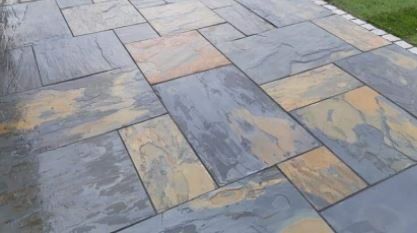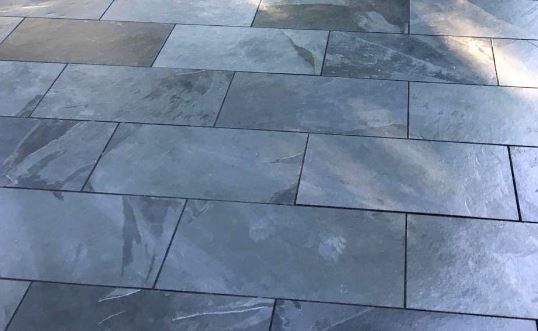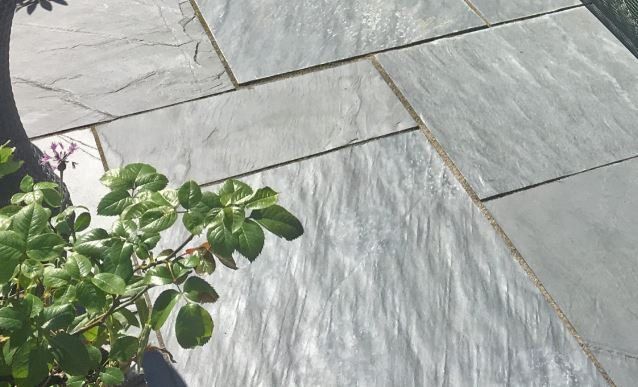Slate Paving Leeds
Slate Paving
Slate Paving is another naturally formed stone, which can be cut to provide a hard-wearing paving ideal for paths and patios, as well as for roofing in the form of roof tiles.
Similar to some of the other natural stones it is a metamorphic rock meaning that it has been formed over many, many years through the application of heat and pressure. The basic ingredients for slate are shale which itself is muddy clay, with sand and volcanic dust - other additional minerals provide additional variations in colour and density. The pressure and heat transforms this into slate but it has a subtle layering, sometimes referred to as strata within in. Slate mines can still be found in the UK in North Wales, Cumbria and Cornwall.
Slate Paving options
From a naturally occurring perspective slate can be formed in the following colours: grey, green, red, blue, brown, purple and black. As mentioned the colour will be based on the inclusion of other minerals and compounds. The presence of iron oxide will push the colour towards red and purple shades whilst chlorite will impart a green shade.
However from a paving stone perspective the most common shades will be
variations
of grey with hints of green, blue or purple, copper through to charcoal and black. As with most other pavers they will be available in a number of sizes to enable you to have an interesting paving area rather than just fitting one
size of paving slabs right across your patio.
Looking after a Slate Paving Patio
Due to the way slate is formed it is a little more prone to some initial lamination during the initial install. The transportation and formation of the slabs will cause some layering to loosen. However, once these initial loose layers have been removed you should be left with a hardwearing paving stone. The lamination itself does provide some additional character to the paving but you may want to use some alternative for the boarder of the patio area as the edges of slate paving can be sharper than most of the other paving slabs options.
As with all outdoor paving stones - specialist 'slate paving cleaning fluids' will be available to buy and naturally you would expect them to be specially formulated to clean well whilst protecting your natural paving. If you have got a particular stain or issue then it would be worth checking out these specialist cleaners and if you know what your particular spill or stain is then picking one which specifically mentions that it is effective for cleaning this type of dirt. If the accumulation of dirt is simply the usual out door rain, leaves and the associated dirt and droppings which you will get outdoors you should be fine to brush away and if necessary gently power wash with some mild detergent.
Need help?



